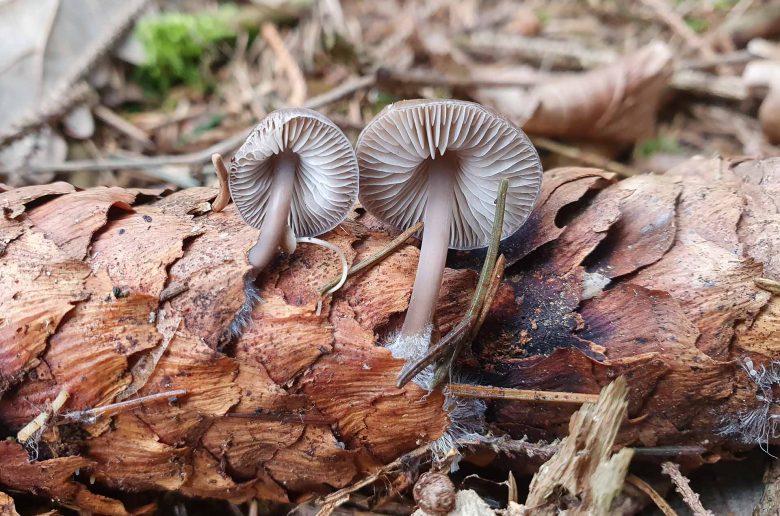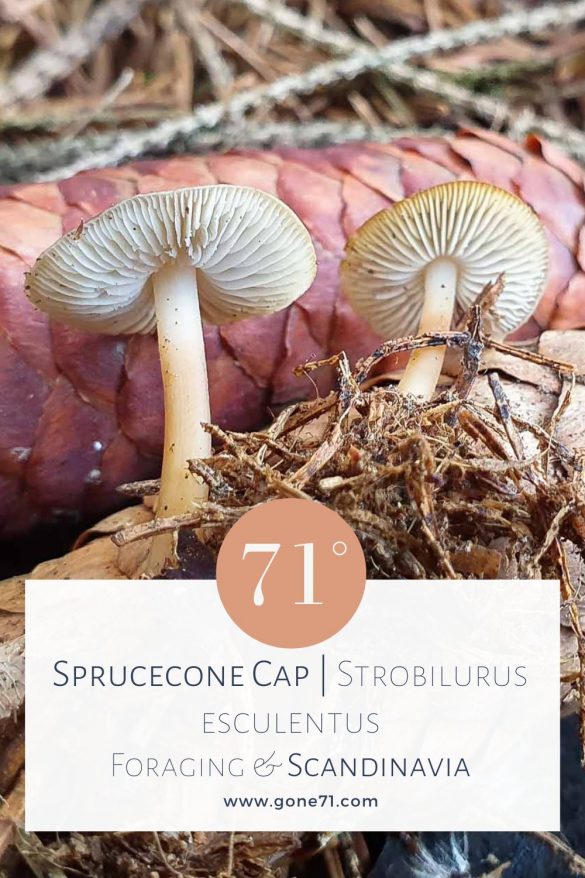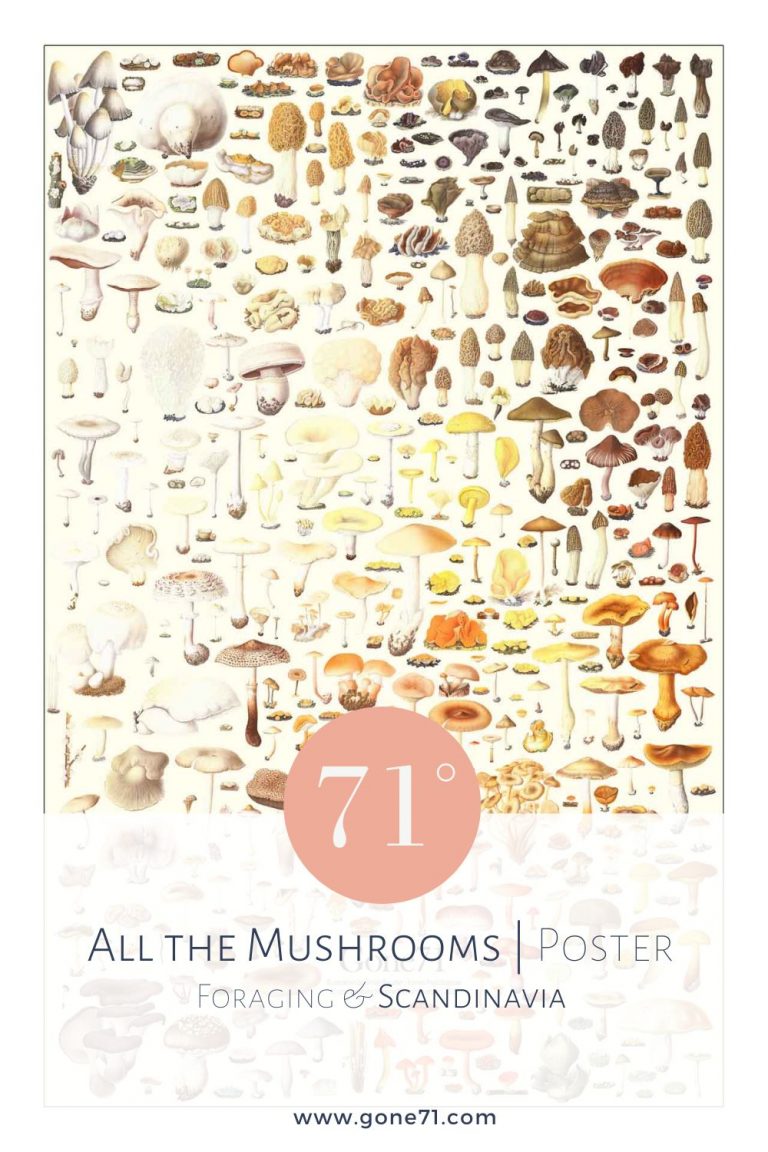swe.: Grankotteskivling | nor.: Grankonglehatt | fin.: Kuusenkäpynahikas | dt.: Fichtenzapfenrübling
Sprucecone caps are among the most inconspicuous edible mushrooms out there. You need a good eye and a good knowledge of habitat and possible confusion in order to forage them. Collecting these mushrooms is particularly worthwhile for wild collectors because they bridge the gap between the classic winter mushrooms such as enoki or oyster mushrooms on the one hand and different morels on the other.

Appearanceof the sprucecone cap
diameter cap: 1-2 cm
stem: thin, very elastic, bron-yellowish
months: spring – central Europe as early as February
colour: whitish lamella, brown cap
habitat: mixed forests, coniferous forest (spruce) on last year’s spruce cones
characteristic: grows only on spruce cones
This fungus from the cone-cap family (Strobilurus) grows, as the name suggests, only in the company of spruce trees. The mushroom mycelium requires the cones to form the fruiting bodies. So if you have spruce forests in your area, you should go in search of this common fungus in spring. In milder climates, the sprucecone cup can be found as early as February. In any case, it is one of the first spring mushrooms, which can occasionally be found all year round. The small maroon to chocolate brown caps are a dainty 1 to 2, sometimes 3 centimeters in diameter, making them difficult to spot.

Despite its relative abundance and its culinary qualities, the mushroom receives very little attention from mushroom pickers and usually it is only the die-hard foragers who go on the active search.
Confusion with Mycena strobilicola
Those who have no experience with spruce-cone caps can really easily mistake them for the spruce cone helmet (Mycena strobilicola). Toxic is not poisonous, but is considered inedible. The external appearance of these two mushrooms is really similar, especially when young. However, the spruce-cone cups usually have a slightly lighter brown cap. The most striking distinguishing feature, however, is the smell. While Sprucecone cap smells very pleasantly mushroomy, Mycena strobilicola has a rather pungent, chlorine-like odor.



Another confusion can arise with the identical looking pine-cone cups. However, since these only grow on pine cones, identification should be easy. Pinecone cups are also edible, but a distinction is made between the “mild” (Strobilurus stephanocystis) and the “bitter” (Strobilurus tenacellus) pine-cone cup. While the mild version is to be used in the same way as the spruce-cone cup, the bitter version is considered inedible (or only for die-hards).

In the kitchen
For culinary purposes usually only the cap is used. The stalk is quite tough, but can be dried and processed into mushroom powder. Due to its delicate appearance, extensive meals with this mushroom are rather difficult. However, the spruce-cone cup is excellent in soups, omelettes or breads and spreads. It can also be used fried as a simple bite or to sprinkle on salads.
Sprucecone caps have a pleasant mushroom flavor. As spring mushrooms, they are also ideal when accompanied with fresh spring herbs such as garlic mustard, chickweed, wild garlic, wild chives and other classic spring herbs.

Sprucecone cap omlet
Ingredients
- 2 handfuls of spruce cone caps
- 1 onion
- 4 organic eggs
- feta
- wild herbs
- salt
- pepper
- possibly diced red pepper (for coloring)
- olive oil
Instructions
- Finely chop the onion and sauté in olive oil.
- Add the cleaned mushroom caps and fry.
- If you opt for vegetables like red peppers, you can also add them at this point.
- Crack the eggs from the shell into a bowl and whisk together with a little salt.
- Put the eggs in the pan and cook over medium heat.
- Make sure that the omelet is not too hard and has a homogeneous, soft consistency.
- Crumble the feta into small pieces and sprinkle over the omelet together with the finely chopped wild herbs shortly before the end.
- You can sprinkle some Parmesan on top if you like.
- Enjoy the meal
Find some inspiration in other mushroom recipes
↓↓↓
We have compiled this overview with the best of knowledge and belief, but do not claim to be complete and reserve the right to make errors.
Learn more about poisonous mushrooms and mushroom poisons here
↓↓↓



